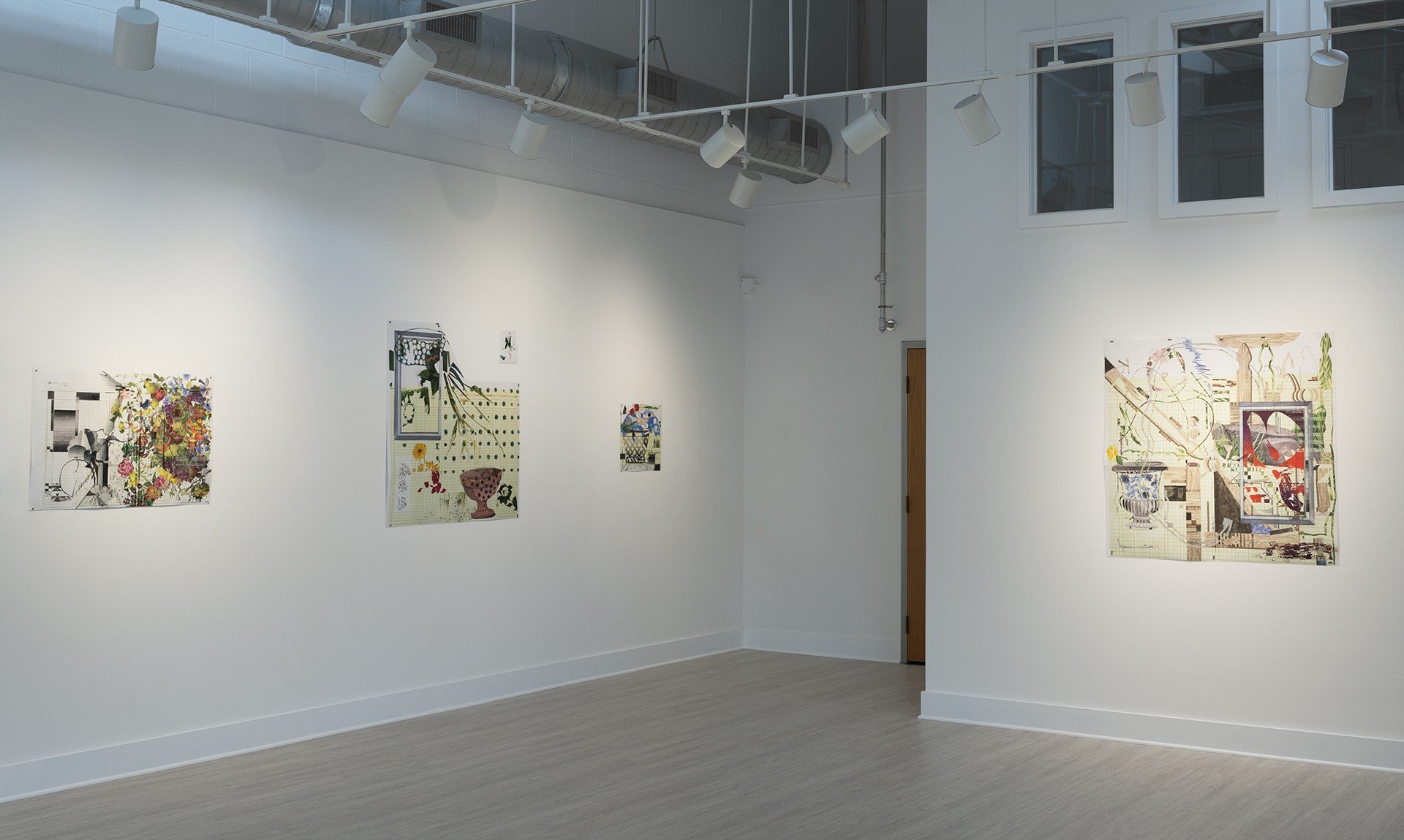An essay to accompany the exhibition memory embank, a solo exhibition of new work by Lynne Marinelli Ghenov at Goodyear Gallery. Curated by Eleanor Conover.
By Mary Laube
Scraps of Geography
Jennifer S. Cheng begins her poem Chang ‘E like so:
“A girl is a house her ancients build. A girl is a house inside a house. A girl is a house before she knows it. She notices the house, she says, a house. She says, where is my rock?”
In her recent collection of poems Moon: Letters, Maps, Poems, Cheng explores the border and border-lessness between the body and home, mythology and memory, and the vastly deep internal experience of living a life. When reading Cheng’s work, I am reminded of floating upon water, gazing skyward, ears submerged in a space that allows me to hear inside my own body. The sound appears like echoes from the outside, dampened by the edges of the container I am in, my skin perhaps, as I pick up traces of the external world.
“A home is not a home until you build it. Until you find what you can, scraps of geography that belong in your hands: ragweed, globe, oxalis:”
The chatter between ourselves and our relational existence with people, things, and environments is ceaseless. It is in our socialization with the material world, through art making and poetry, that we can traverse the thresholds between any perceived separation of mind and body, self and home, and past and future among other seemingly paradoxical concepts.
“A man on a roof is not resolving the sky-light; a woman on the ground is not waiting for him to be done. She is listening for that ever so tiny gap between the locust’s hum when the sound of it wounds the air.”
I begin this essay with Jennifer Cheng to help us find a particular viewing position for seeing the work of Lynne Marinelli Ghenov. Concurrently, we can and should read Cheng’s work through the lens of Ghenov to gain further insight; both can perform as half translucent windows that reflect each other in surprising ways depending on where you stand. The exercise here is to peer into another world while wholly remaining in our own.
Returning to my description of Cheng ‘E, we could apply similar observations to Ghenov’s solo-exhibition, memory embank at Goodyear Gallery at Dickinson College, which traverses the edges between memory and imagination, past and future, and hope and grief. In writing this I find it difficult to directly describe what the work is with typical categorizations of medium. Using vintage wallpaper transfers, Ghenov draws on top of, masks, and re-organizes existing information. Without explanation, the works’ materiality is almost impossible to decipher, teasing us with subtle clues of surface deviations, while remaining utterly elusive. The patterns may point us to a particular time and place, say a 1982 middle class American dining room. Yet this classification hovers in the background of the much more prominent voice in the work: the endeavor of collage. Yet, to describe Ghenov’s work simply as collage does not fully encapsulate the deeply poetic nature of the work’s attention to process, material sourcing, and response. Like Cheng, Ghenov is working in her own idiosyncratic world of handed down mythologies, primarily accessed through the material detritus of a life succumbed to death. Working from memories of a childhood home, the fragments that emerge in her work are manifestations of how we are to make sense of our lives when our origins disappear. Working from found materials and vintage patterns, or rather scraps of geography, Ghenov marks and re-marks in conversation with and on the already existing world, a world that exists regardless of her not simply because of her. While this explanation may suggest a tone of indifference, its intention is not to dismiss our impact on the world, but to rather envelope us in the qualities that Ghenov’s work brings us face to face with: the vastness of nature and the heartbreaking passage of time. The careful and meticulous methods of Ghenov’s image building, the ledger paper, and patterns remind me of the sound of a metronome, a ticking clock, or a quietude that is never fully still.
memory embank, makes a case for collage to revolutionize the creation myth of art making. That is, the hubris of stepping into the shoes of god, making something from the blank white nothingness of a sheet of paper. Upending this myth, Ghenov shows us that collage can work as both a mirror and portal, a window into her ongoing, relational experience with life. Through a process of call and response memory embank, builds a new world not merely in the spirit of fantasy, but one that conjures hope and repair.
